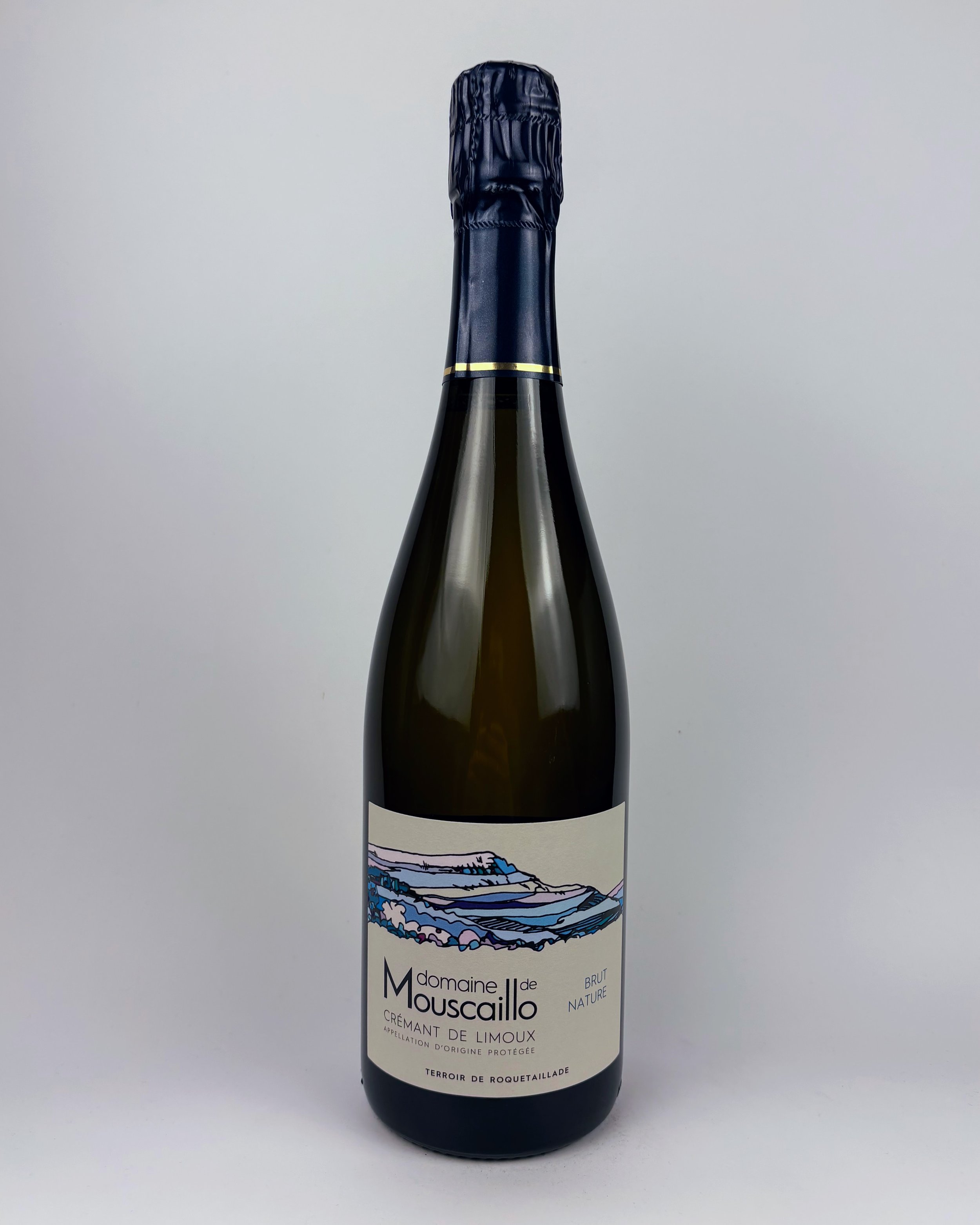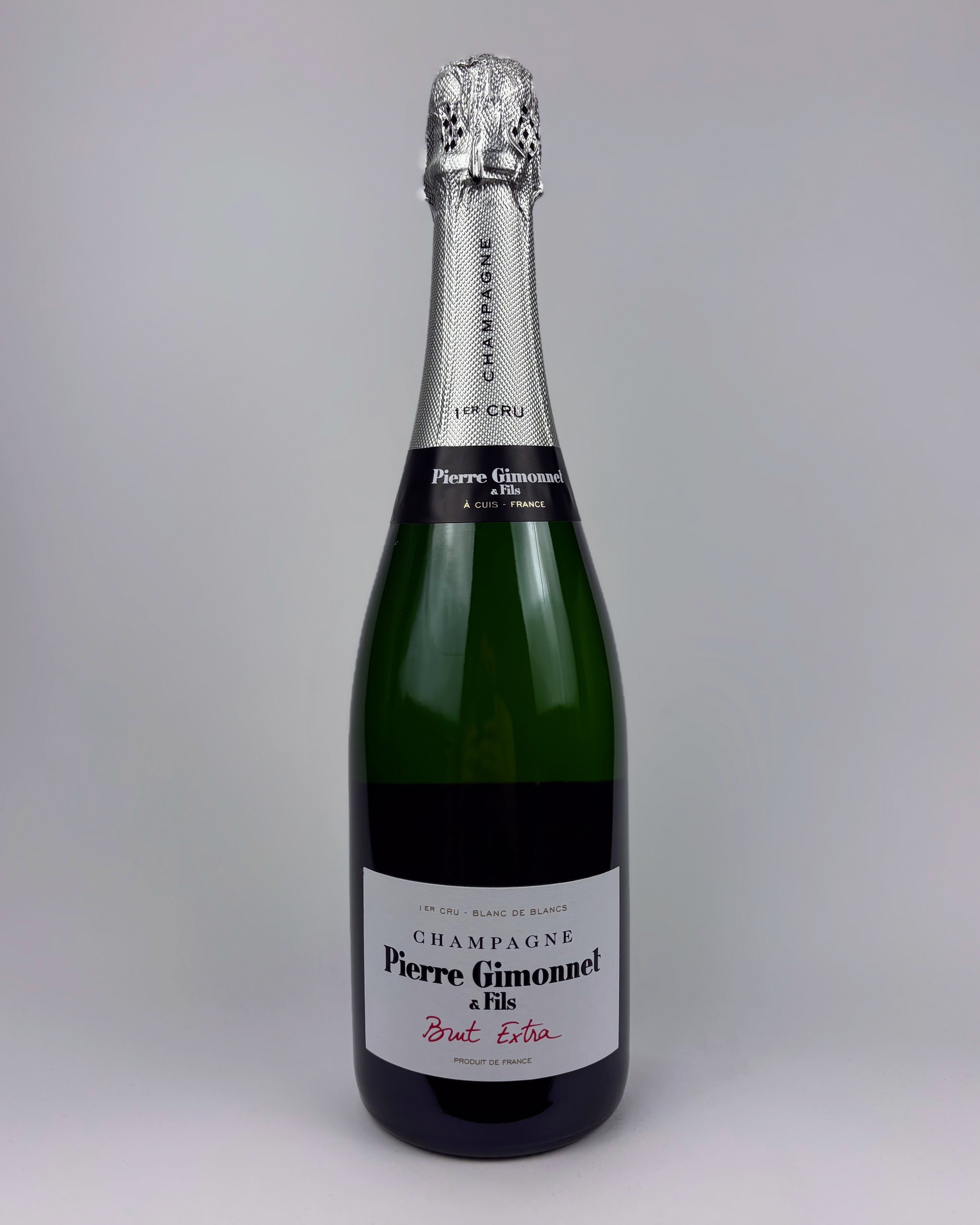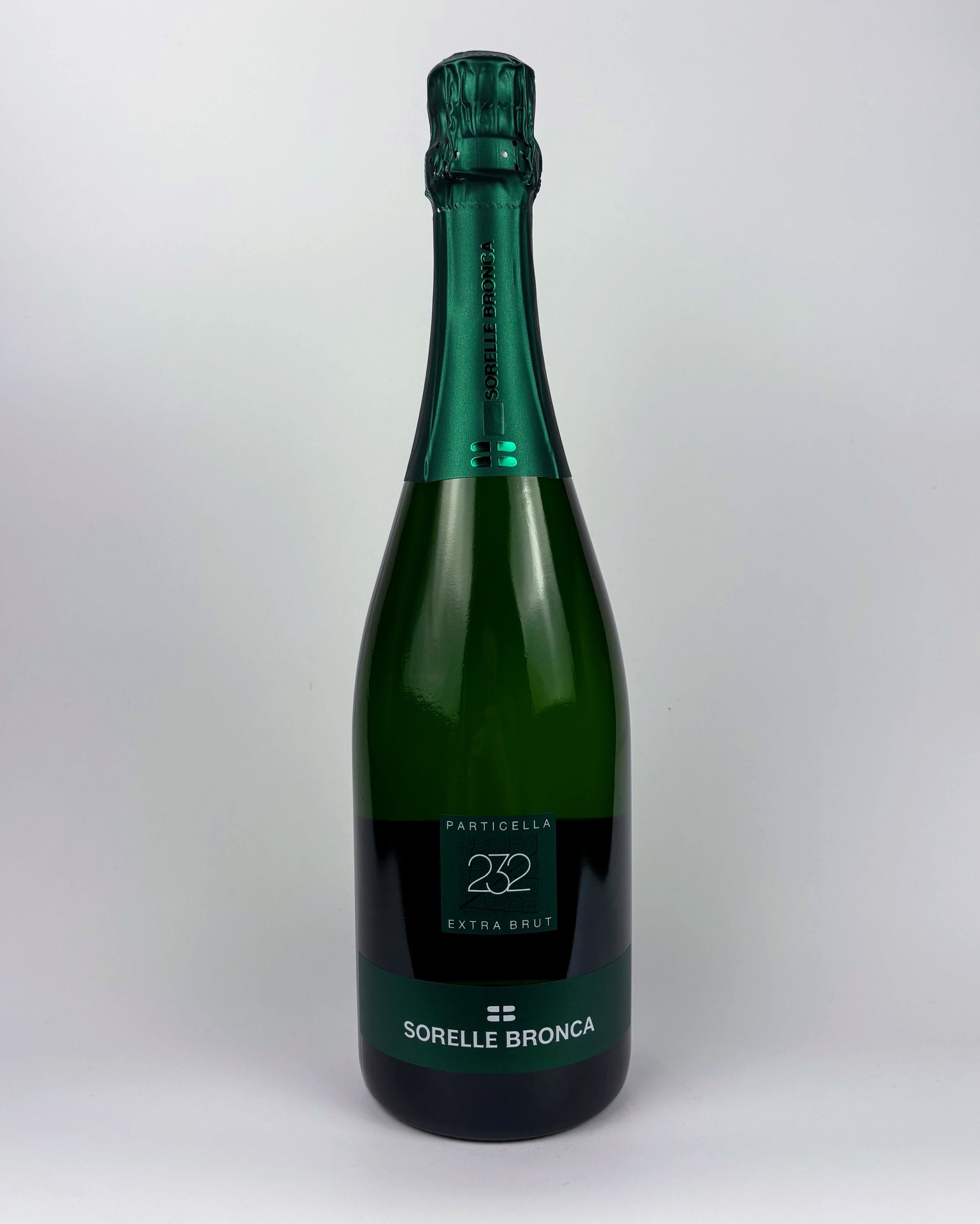 Image 1 of 2
Image 1 of 2

 Image 2 of 2
Image 2 of 2



Mouscaillo, Brut Nature, Cremant de Limoux NV
Sparkling wines made in the Traditional method from 70% Chardonnay, 20% Pinot Noir, and 10% Chenin Blanc. This corner of the Languedoc, in the eastern foothills of the Pyrennees, has surprisingly cool climate due to the Atlantic influence and rich veins of limestone soils.
Wine historians think Limoux is likely where the earliest sparkling wines in France were produced, much earlier than in Champagne. There are references to it in texts dated 1531 from Benedictine monks at the nearby abbey of Saint-Hilaire.
From the Importer: A stunning example of what the limestone cliffs around this village above Limoux can produce. The chalky texture in the mouth is delicately coated with unctuous fruit showing quince, citrus and some fresh baked bread notes. The balance is both refreshing and full showing almost perfect balance of bracing acidity, minerals and fruit.
Sparkling wines made in the Traditional method from 70% Chardonnay, 20% Pinot Noir, and 10% Chenin Blanc. This corner of the Languedoc, in the eastern foothills of the Pyrennees, has surprisingly cool climate due to the Atlantic influence and rich veins of limestone soils.
Wine historians think Limoux is likely where the earliest sparkling wines in France were produced, much earlier than in Champagne. There are references to it in texts dated 1531 from Benedictine monks at the nearby abbey of Saint-Hilaire.
From the Importer: A stunning example of what the limestone cliffs around this village above Limoux can produce. The chalky texture in the mouth is delicately coated with unctuous fruit showing quince, citrus and some fresh baked bread notes. The balance is both refreshing and full showing almost perfect balance of bracing acidity, minerals and fruit.
Sparkling wines made in the Traditional method from 70% Chardonnay, 20% Pinot Noir, and 10% Chenin Blanc. This corner of the Languedoc, in the eastern foothills of the Pyrennees, has surprisingly cool climate due to the Atlantic influence and rich veins of limestone soils.
Wine historians think Limoux is likely where the earliest sparkling wines in France were produced, much earlier than in Champagne. There are references to it in texts dated 1531 from Benedictine monks at the nearby abbey of Saint-Hilaire.
From the Importer: A stunning example of what the limestone cliffs around this village above Limoux can produce. The chalky texture in the mouth is delicately coated with unctuous fruit showing quince, citrus and some fresh baked bread notes. The balance is both refreshing and full showing almost perfect balance of bracing acidity, minerals and fruit.

![Henriot, Brut Souverain, Reims, Champagne NV [375 ml]](https://images.squarespace-cdn.com/content/v1/632a3841c16fb2436c59a1fd/1692120273338-C5RUDX0P72V2H3S2I4ZI/IMG_7283.jpeg)



